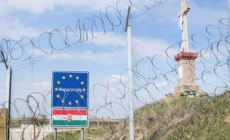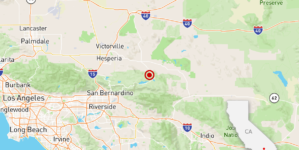Hungary was the first European country to respond to the 2015 migration crisis by constructing a border fence along its southern frontier. A decade later, several EU member states have followed suit, erecting physical barriers to curb uncontrolled migration from Africa, the Middle East, and Eastern regions.
Although Hungary has fulfilled its EU obligations regarding external border protection, the fence has faced consistent criticism from several Brussels officials. The European Court of Justice has imposed a €1 million daily fine on Hungary for both its physical and legal border control measures.
Despite the opposition, Hungary has maintained that monitoring border crossings is the only sustainable way to manage irregular migration. Without this, authorities cannot track the movement of illegal entrants, leading to economic strain and long-term social tensions—concerns now echoed by other EU nations.
Countries that have since erected similar physical barriers include:
-
Bulgaria, along its 250-kilometer border with Turkey
-
Greece, which extended its Maritsa River fence originally built in 2012
-
Lithuania, Latvia, and Poland, along their borders with Belarus and Russia, citing state-sponsored migrant flows and security threats
-
Estonia, building a barrier along its Russian border for similar reasons
-
Finland, replacing an old wooden livestock fence with a modern barrier along 130 km of its 260 km Russian border. The €400 million project is partly funded by the EU
-
Norway, along major sections of its 200-kilometer border with Russia
-
France and the United Kingdom, around Calais and Channel tunnel access points, with 65 kilometers of fencing
-
Germany, with selective barriers at heavily used crossing points
-
Austria, Slovenia, and North Macedonia, reinforcing their southern borders to curb illegal entry
!function(e,n,i,s){var d=”InfogramEmbeds”;var o=e.getElementsByTagName(n)[0];if(window[d]&&window[d].initialized)window[d].process&&window[d].process();else if(!e.getElementById(i)){var r=e.createElement(n);r.async=1,r.id=i,r.src=s,o.parentNode.insertBefore(r,o)}}(document,”script”,”infogram-async”,”https://e.infogram.com/js/dist/embed-loader-min.js”);
Earlier, Spain had already constructed fences around its North African exclaves, Ceuta and Melilla, in the 1990s. Once condemned and penalized by EU institutions, Hungary’s border defense strategy has become a model for others. While physical barriers remain controversial in Brussels, they are increasingly seen as a necessary component of national and EU-level border security.
Hungary’s approach combines physical fences with a legal “border closure,” tightening rules on unauthorized crossings and expanding law enforcement powers against illegal migrants and human traffickers.
Related article
Free Movement at Risk: EU States Reinstate Border Checks over Migration Fears
Hungary says Schengen can only survive if illegal migrants are stopped before reaching EU territory.Continue reading
Via Oeconomus; Featured image: Facebook/Migrációkutató Intézet
The post Fences First: Physical Barriers Now Define Europe’s Response to Migration appeared first on Hungary Today.
Source link






























